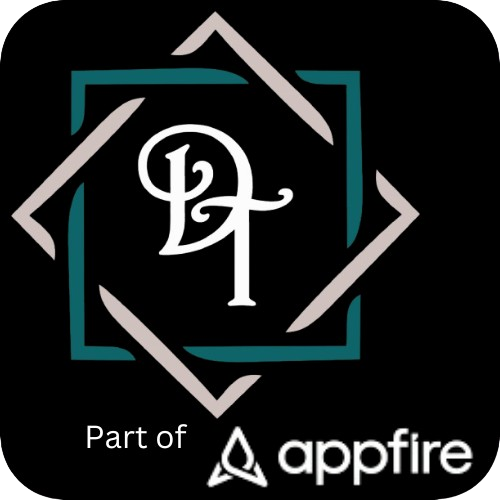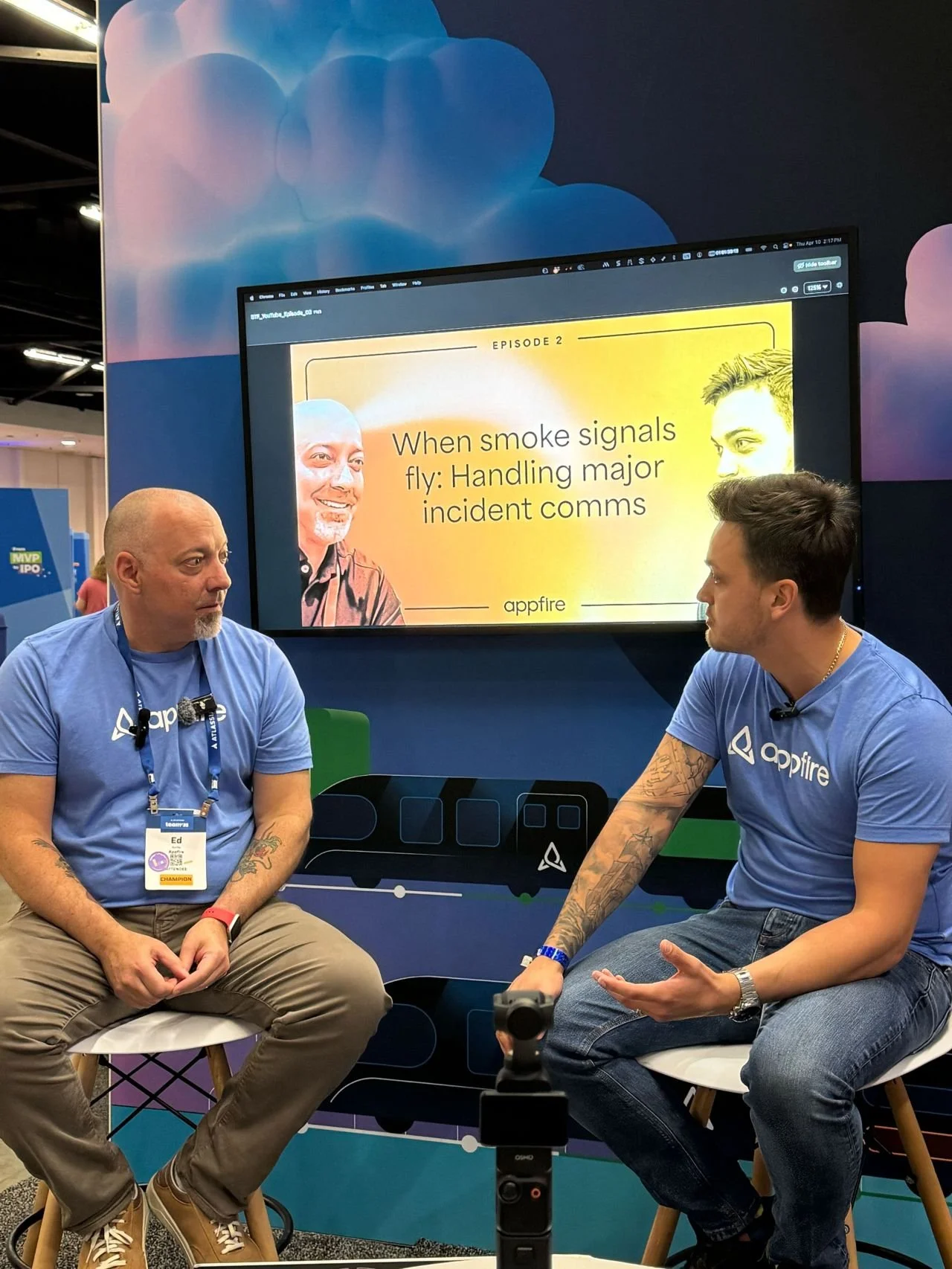Filming Beyond The Flame
Back in May, my partner-in-crime, Ed Gaile, and I decided to try something a little different with Appfire: a podcast. Nothing new to Appfire, but something both new to us. Nothing too precious, but an opportunity to experiment. A way to spread useful ideas by mixing up formats, trying new riffs, and bringing on guests we might not usually get to work with.
We wanted more in-person sessions than we managed. Real life had other plans. Most recordings ended up virtual. Whenever we were in the same city, we grabbed the chance and hit record.
Season 1 was a blast. As with any good journey, we also picked up a few bruises and a lot of lessons along the way.
What we set out to do
The mission was simple. Take the everyday challenges of a any team and talk about them like human beings. Less theatre, more therapy. With season one being solely focused on service teams, we wanted to discuss high pressing topics like crisp incident comms, practical shift-left tips and how change practices doesn’t have to be painful.
Our guest speakers brought a lot to the plate with some exceptional talks on triaging for success, SLAs vs XLAs and how teams are looking for new metrics as well as scaling for success. If that sounds like your team, you’ll feel at home in the Season 1 playlist.
Lessons Learnt
Shorts beat full episodes more often than not
Short-form clips win attention. Viewers are busy, on their phones, and looking for quick value. We found that one tight idea, well told, outperforms a meandering 40-minute chat nine days out of ten. That doesn’t mean long form is dead. It means the gateway is short. Earn the click, then earn the trust.
We started planning episodes like Lego sets. Build the big model, but design it so you can click off clean, self-contained pieces for Shorts and social.
Allowing the conversation to naturally flow between topics - Let the conversation breathe
While some podcasts do great at just talking blindly for an hour, every podcast has a small structure. Both Ed and I agreed that we wanted the same. Some loose points to guide the conversation but nothing to rigid. This was often easier said then done, especially at the start. Then we loosened up. The best moments came when we followed curiosity and let adjacent topics flow. Curiosity to explore deeper into one topic with a guest or just ignore a topic area altogether if it isn’t fitting with the current conversation.
So we gave ourselves a lighter outline. Clear entry and exit points. Space for guests to take us somewhere interesting. The downtime episode is a good case: we started on incident handling and ended up with concrete, repeatable habits for calmer recovery. No one was mad about it.
Season 1 in a nutshell
Season 1 set out to prove a simple idea: process beats tools, and great tools shine when the process is right. But we needed to focus on a specific area in order to give ourselves and our story total focus. We picked something we both enjoyed and had stories and examples to provide. Across the season we tackled the unglamorous but vital bits of running a service desk. Major-incident comms where prep beats panic. Shift-left that doesn’t feel like deflection. Change that ships safely without strangling flow. We stayed practical: triage that actually moves work, first-time fix powered by better knowledge, and prioritisation that ends cherry-picking. We also took a sober look at XLAs versus SLAs.
What are we doing for season 2?
Season 2 is fast approaching. We want to keep with the same overal aim, to spread product awareness and talk about processes and company aims. However, this time we are changing themes from ITSM to Knowledge, automation and AI. We want to show how these pieces fit together in the real world: clean knowledge that your agents and bots can trust, automation that removes toil instead of creating maintenance debt, and AI that augments people rather than replacing judgement.
Knowledge, automation, and AI are crucial for companies to get right because they collectively enhance decision-making, operational efficiency, and competitive advantage in significant ways.
Accurate knowledge enables businesses to gain a deep and nuanced understanding of their markets, customers and inform smarter strategies that are both relevant and effective.
Meanwhile, automation streamlines repetitive and time-consuming tasks, significantly reducing errors and freeing up valuable human resources to focus on higher-value activities.
AI further complements these elements by providing advanced capabilities such as predictive analytics, personalised customer experiences, and intelligent process optimisation.
This combination empowers companies to adapt swiftly and proactively in an ever-evolving and increasingly complex business landscape, but understand the possible traps they may fall into if they are not careful.


